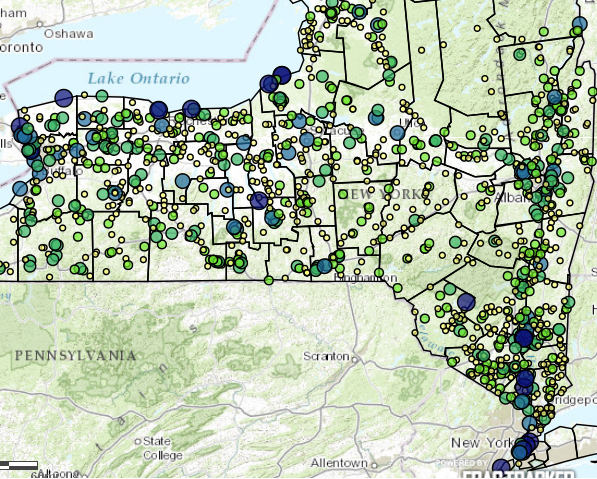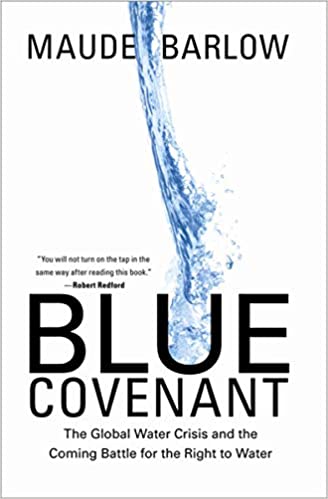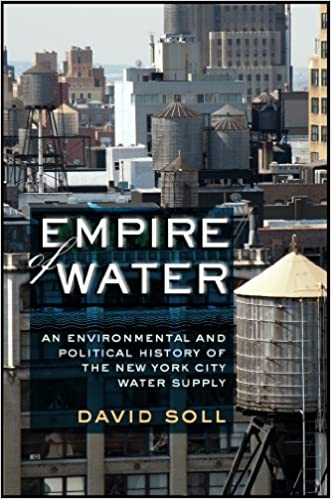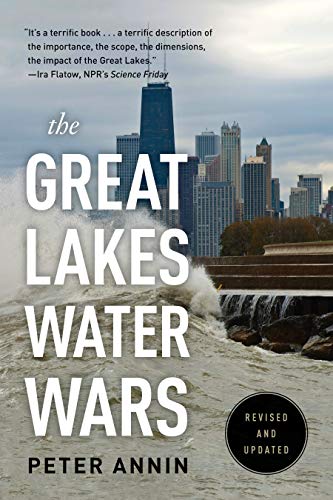
April 2, 2015DEC Speeds Up Water Permit GiveawayThe NYS Department of Environmental Conservation (DEC) is pushing forward to process water withdrawal permit applications under our states's new water permitting law without requiring compliance with the water conservation standards contained in the new law or conducting environmental reviews of the permit applications. The permits are being issued gratis without the payment of water usage fees or application processing fees. As of April 1, 2015, notice of 125 water withdrawal permit applications has been given in the weekly Environmental Notice Bulletin (ENB) published by DEC. The pace of processing is picking up. Notice of 75 applications has been given since January 1st (three/fifths of all applications noticed to date). A list of the ENB notices to date is available here. (To find out if a permit has been issued, one must search the DEC's Permit Applications Database for each application.) The notices of applications from non-public water users for "existing" uses assert that the projects are not subject to SEQRA because they are Type II actions. In response to comments filed on several applications, DEC has asserted that issuance of "initial" permits to existing users is a Type II action because it is non-discretionary. The claim that the DEC has no discretion in issuing an "initial" water withdrawal permit is a surprising claim given that other DEC permitting programs also provide that permits "shall be issued" but this has not prevented DEC from exercising discretion in setting permit conditions or conducting SEQRA reviews for those permitting programs. For example, a statutory mandate in ECL § 23-0503 requires the issuance of a gas drilling permit if the proposed spacing unit conforms to statewide spacing requirements, but the DEC has not used that wording to preclude the exercise of discretion in setting the conditions contained in gas drilling permits or to preclude environmental review of gas drilling permits. As discussed in earlier posts, the 2011 amendments to the WRL are the first statutory provisions in New York to require users other than public water supply systems to obtain water withdrawal permits. Public water supply systems have been required to obtain water withdrawal permits since 1905. About 1600 water users in the state registered uses of greater than 100,000 gallons per day in 2012. Approximately one thousand of these users are non-public water users. These existing users are required to obtain "initial" permits under the new law. A list of all users registered in 2012 was obtained through a FOIL request to the DEC and is available here. These users are plotted on a map of registered water withdrawals created by Karen Edelstein for Fractracker in July 2013.
The total volume of water requested in the first 125 applications for which notice has been given is more than 7.5 billion gallons per day. In some cases the application is for substantially more than the maximum reported water usage of the user. For example, the application for the Roseton Generating Station on the Hudson River, noticed on March 11, 2015, is for 923 million gallons per day from the Hudson River. This is 29 million gallons per day more than Roseton's reported maximum daily usage of 794 gpd in 2012. But it is too late to comment. The two-week comment period on the Roseton application expired March 26, 2015. The DEC's practice has been to allow only a two week comment period on applications for existing uses. No hearings have been scheduled. Almost 3.5 billion gallons of the 7.5 billion gallons per day applied for to date is for water to be withdrawn from the East River in the Hudson River estuary. This water is being used to cool four electric generating stations: Ravenswood, Astoria, Con Ed and Brooklyn Navy Yard. Although the East River is in an estuary and water from it is not potable, the River is a major fish migration route and the enormous withdrawals by these generating stations for their once-through cooling systems do tremendous damage to aquatic life in the estuary and the entire Hudson River watershed. DEC is allowing this despite the special protections granted to the estuary by the Hudson River estuary management program, ECL §11-0306. The New York State Legislature adopted the estuary program because the estuary is “of statewide and national importance as a habitat for marine, anadromous, catadromous, riverine and freshwater fish species.” Id. Yesterday DEC announced the release of its Draft Hudson River Estuary Action Agenda 2015-2020. Comments on the plan are due by May 1. Target 4 of the draft agenda calls for the reduction of fish kills at the "four remaining steam electric power plants that use once-through cooling systems" in the estuary. These are the four plants named above that DEC pushed to the head of the line for new water withdrawal permits without any changes to their cooling systems. Posted by Rachel Treichler at 04/02/15, updated 4/29/16.
Copyright 2021, Rachel Treichler
|
|







